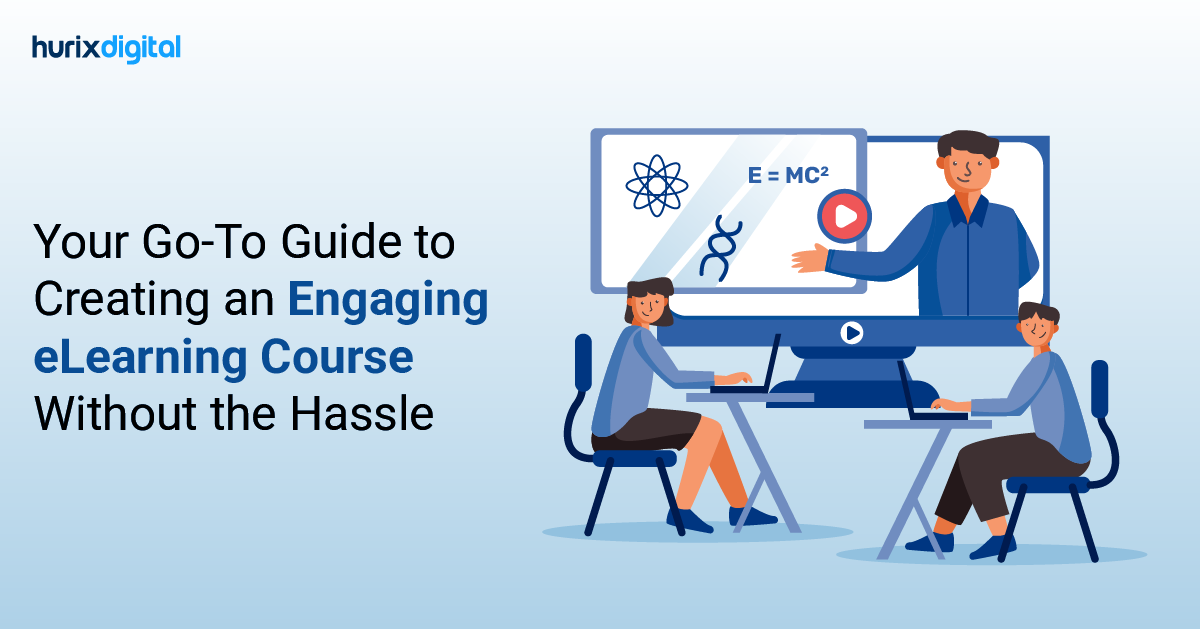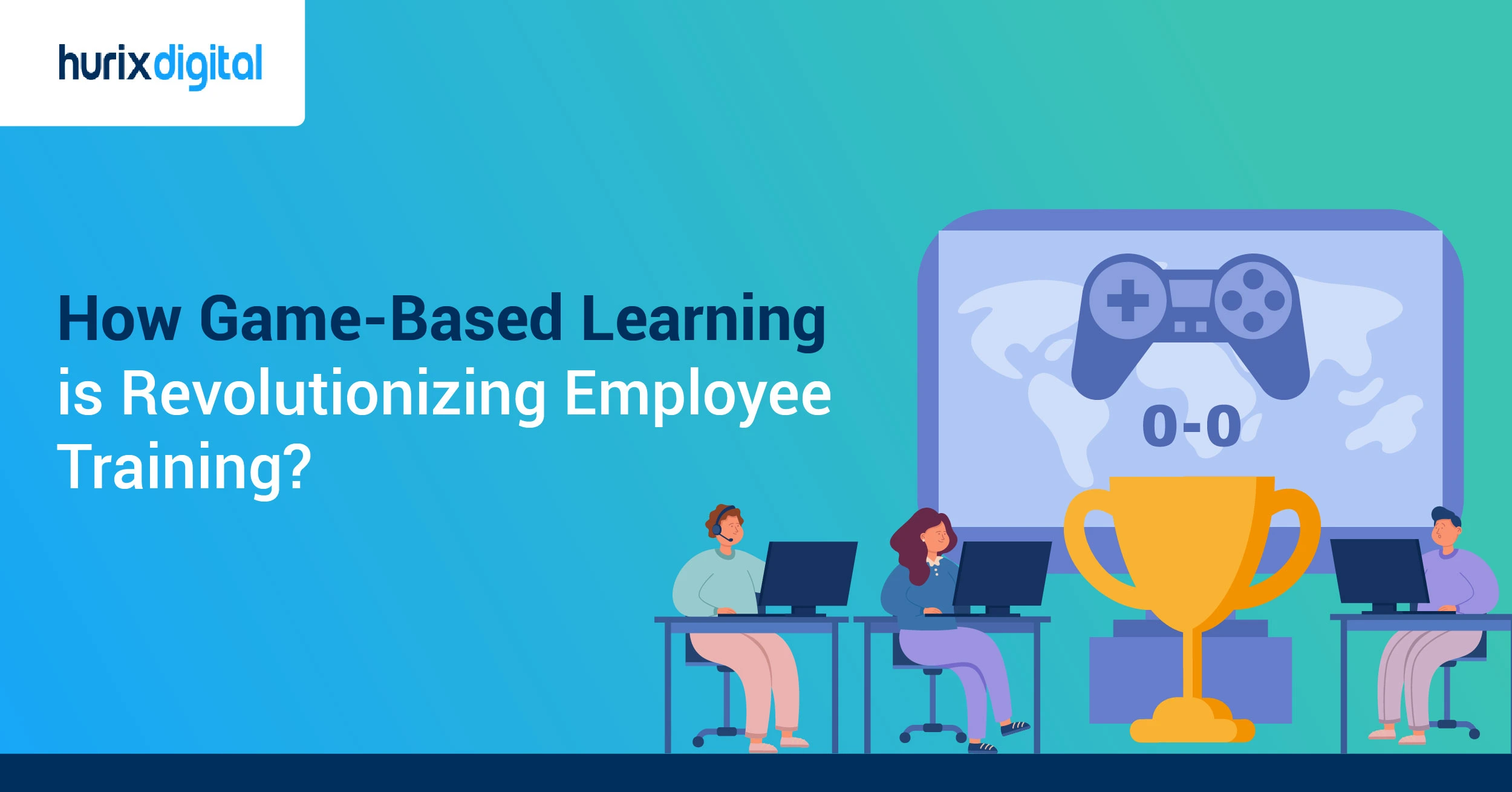
How Game-Based Learning is Revolutionizing Employee Training?
Summarize with:
Game-based learning is online learning that uses games to motivate, engage, and challenge learners. It can be used to teach various skills, concepts, and knowledge in a fun and interactive way.
According to a report, the global game-based learning market is expected to grow at a CAGR of 19.6% from 2021 to 2027, reaching $32.6 billion by 2027.
But how can you create an engaging game-based training experience for your learners? What are the benefits of game learning for education and training? And how can you leverage game learning solutions to achieve your learning objectives?
This blog will answer these questions and share some tips and best practices for creating effective game learning experiences.
Table of Contents:
- What is Game-Based Learning?
- How Game-Based Learning Enhances Learning Outcomes?
- How to Design Effective Game-Based Learning Solutions?
- What is Sales Training Gamification?
- What is the Importance of Game-based Learning in Product Sales Training?
- How Game-based Learning is Transforming Sales Training?
- Game-Based Learning Solutions: Benefits for Sales Reps
- Top 3 Benefits of Game-Based Learning Solutions for Organizations
- How to Measure the Success of Game-Based Learning for Your Team?
- How to Implement Gamification in Sales Training?
- Conclusion
What is Game-Based Learning?
Game-based learning is a type of learning that integrates the use of games to provide a more engaging, immersive, and effective learning experience. It involves the application of gaming elements and principles in learning environments.
The goal is to enhance the motivation, engagement, and overall learning process of the students or participants. In game based learning, the learners are put into a game scenario to achieve certain objectives or goals. These goals align with the learning objectives of the course or training program.
As the learners navigate through the game, they acquire new knowledge and skills, apply what they have learned, solve problems, make decisions, and receive feedback on their performance.
Game based learning can take various forms, including video games, board games, card games, digital games, simulations, virtual reality & augmented reality. It can be used in various settings, such as classrooms, workplaces, online courses, and training programs.
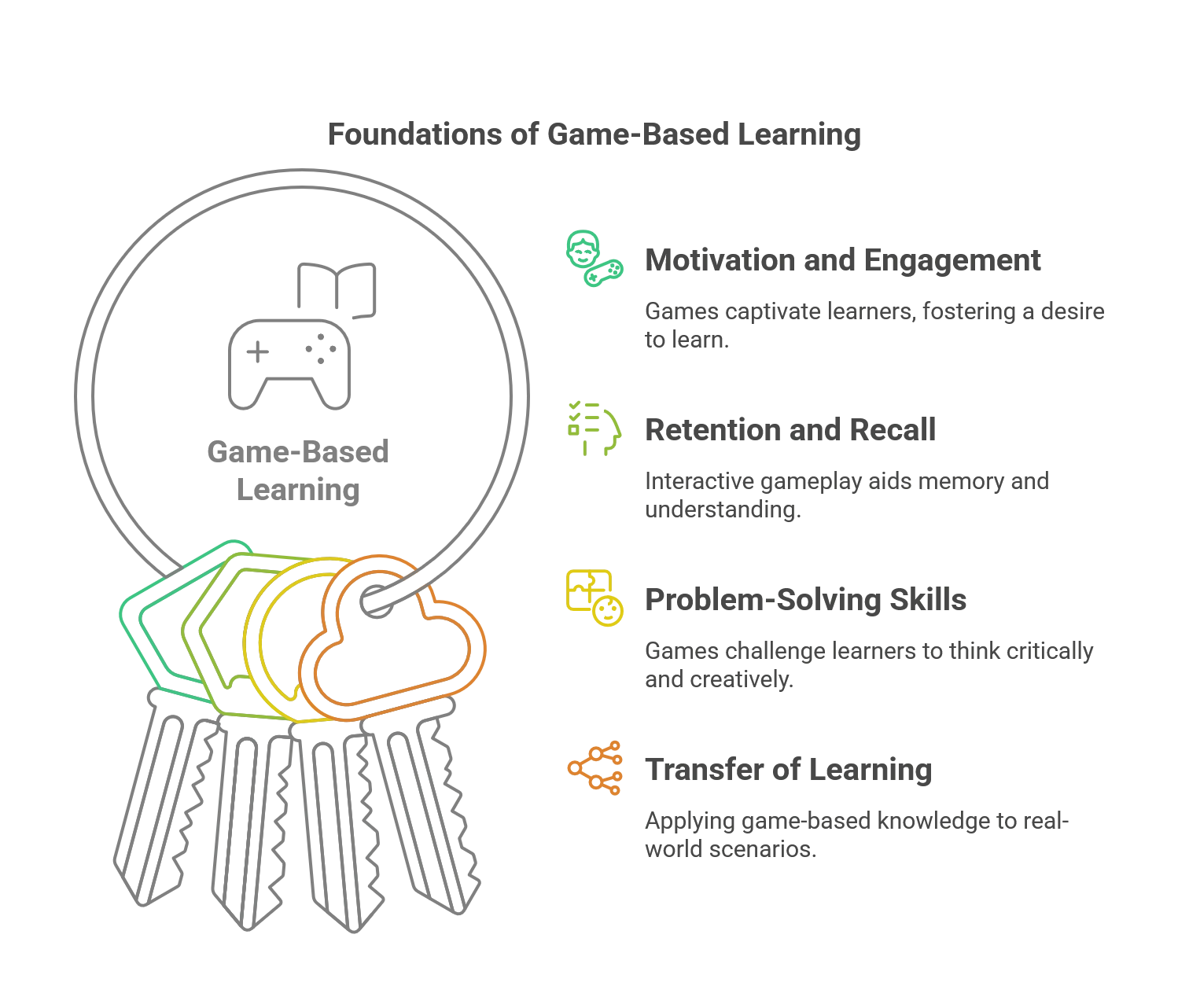
How Game-Based Learning Enhances Learning Outcomes?
Game-based learning can offer many advantages for learners and educators, such as:
1. Increased Motivation and Engagement
According to a report, approximately 80% of workers in the United States find gamified learning experiences to be more engaging than typical training exercises.
Games can capture the attention and interest of learners, making them more willing to participate and learn. They can also provide rewards and recognition, boosting learners’ confidence and satisfaction.
2. Enhanced Retention and Recall
Playing games can help learners remember and apply what they have learned. They can reinforce learning through repetition, practice, and feedback. They can also create memorable and emotional experiences, which can improve learners’ recall and retention.
3. Improved Problem-Solving and Critical-Thinking Skills
As games can present complex and realistic scenarios that require learners to make decisions and solve problems, they can challenge learners to think creatively, analytically, and strategically.
In fact, according to a study published in the International Journal of Technology in Education, the application of game based learning in education has contributed to a 67% increase in student problem-solving achievement.
4. Higher Transfer and Application of Learning
Because games simulate authentic and relevant contexts and tasks that learners may encounter in their work or lives, they can help learners transfer and apply their learning to real-world situations.
In addition to providing immediate and constructive feedback, games can assist learners in improving their performance and learning from mistakes, thereby enabling them to improve their performance.
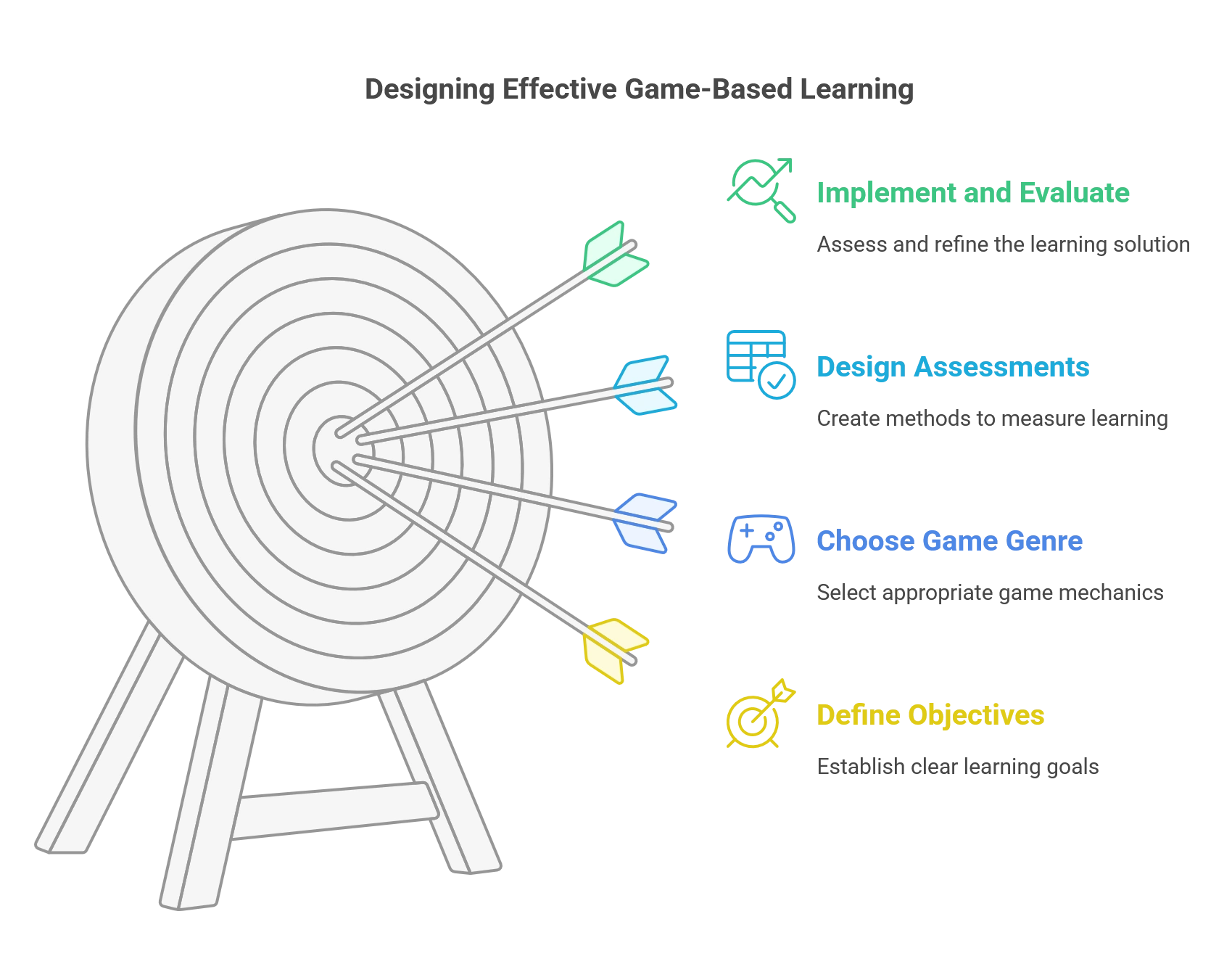
How to Design Effective Game-Based Learning Solutions?
To create engaging and impactful game-based learning solutions, you need to follow some key steps, such as:
1. Define Your Learning Objectives and Outcomes
Before you start designing your game, you must identify what your learners want to achieve and how you will measure their success.
You need to align your game with your learning objectives and outcomes and ensure that your game is relevant and meaningful for your learners.
2. Choose the Right Game Genre and Mechanics
Depending on your learning objectives and outcomes, you need to select the most suitable game genre and mechanics for your game. For example, you can use adventure games, simulation games, puzzle games, role-playing games, etc.
You also need to consider the game elements that will make your game engaging and fun, such as story, characters, graphics, sound, levels, challenges, and rewards.
3. Design the Game-Based Learning Assessments
To evaluate the effectiveness of your game learning solution, you need to design game based learning assessments that will test your learners’ knowledge, skills, and abilities.
You need to ensure that your assessments align with your learning objectives and outcomes and provide meaningful and actionable feedback to your learners. Use various types of assessments, such as quizzes, scenarios, simulations, etc.
4. Implement and Evaluate Your Game-Based Learning Solution
Once you have designed your game learning solution, you need to implement it and test it with your learners.
You need to collect and analyze the data and feedback from your learners and measure the impact of your game learning solution on their learning outcomes. Don’t forget to review and improve your game-based learning solution based on the results and feedback.
What is Sales Training Gamification?
Sales training gamification combines game elements and mechanics to boost the learning process, improve engagement, and enhance knowledge/skills retention.
Game-based learning encompasses various interactive exercises such as quizzes, inter-team challenges, competitive leaderboards, and more. These are designed to stimulate real-life situations and strengthen skills crucial for turning cold leads into sales.

What is the Importance of Game-Based Learning in Product Sales Training?
Learners in lecture-based training don’t actively participate in the knowledge transfer, resulting in boredom, low attention thresholds, and bad retention. So, what’s the best solution to counter this problem?
Simple – turn training into a game. Gamified training increases employee engagement rate by 48%. Gamification in sales results in better learner engagement and enhanced knowledge/skills transfer, guaranteeing greater ROI to your organization.
Here’s a quick look at why integrating gamification into sales training is imperative:
1. A Budget-Friendly Training Module
Conventional training models require extensive physical resources, from mobilizing the sales team across the organization to printing training modules.
Contrary to this, eLearning for sales teams doesn’t require a lot of physical resources. You only need the right firmware and software for conducting the training session.
2. Makes Sales Reps Better Problem Solvers
A good salesperson is a great problem solver, too. Sales training gamification encourages problem-solving skills among sales trainees.
- The gamified learning module presents the trainee with complicated real-life challenges that require critical decision-making.
- The trainees can navigate various scenarios while learning how to analyze customer needs, identify problems, and provide creative solutions.
3. Make Salespersons More Confident and Productive
Your sales reps can’t be productive if they constantly fear rejection from potential customers. Around 48% of salespeople never follow up after a cold call due to this fear.
- Game learning is one of the most effective ways to help sales reps conquer their fears.
- Sales training gamification provides a secure and risk-free space for professionals to experiment and innovate without facing real-world consequences.
This facilitates sales trainees in bolstering self-assurance and hone their skills.
How Game-Based Learning is Transforming Sales Training?
Game-based learning significantly impacts sales training, fundamentally reshaping how sales teams acquire and apply knowledge and skills.
These methods leverage gamification principles, including rewards, levels, points, and immediate feedback, to create an engaging and interactive learning environment.
Here are some key ways in which game based learning is transforming sales training:
- Learners can practice and refine their sales techniques in a risk-free virtual environment.
- Games can adapt to individual learners’ needs, providing a tailored experience that focuses on areas for improvement.
- Games can simulate realistic sales scenarios, preparing learners to handle challenging situations effectively.
- Game learning platforms can track learners’ progress and provide detailed analytics, helping organizations measure the impact of their sales training programs.
Companies can improve their sales teams’ skills and generate more revenue by using creative methods that involve gamification.
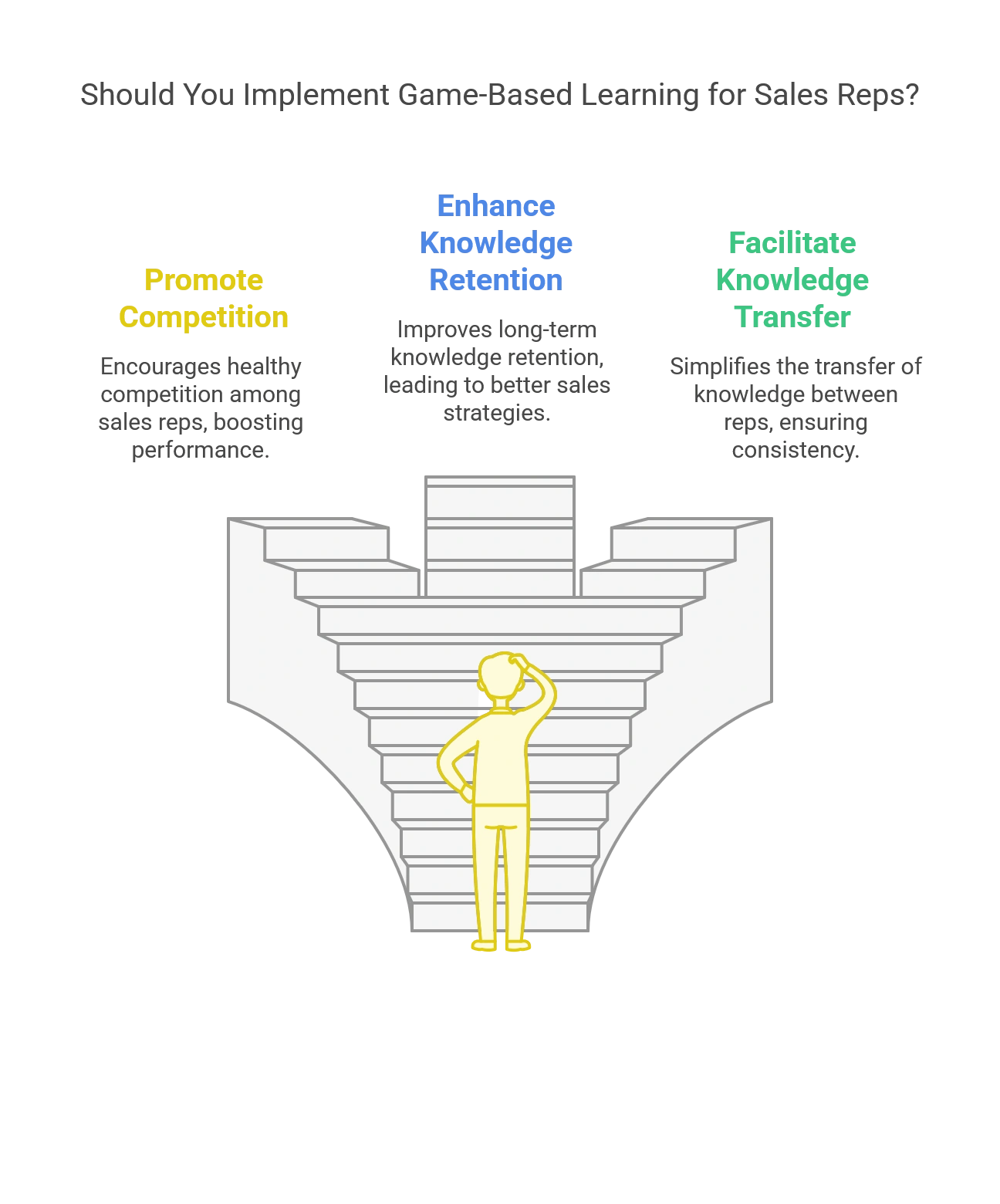
Game-Based Learning Solutions: Benefits for Sales Reps
Game learning solutions benefit sales reps by providing engaging, immersive training experiences.
These approaches foster skill development, confidence, and adaptability, ultimately enhancing sales performance and customer engagement.
1. Promotes Healthy Competition
Healthy competition drives the sales team to excellence. Most offices have traditional leaderboards, where sales reps compete to crunch their numbers and bring revenues to the table.
The sales trainees can play interactive quizzes, and the ones with the best scores get rewards, badges, and a place on the leaderboard.
This promotes a healthy sense of competition, pushing the trainees to hone their skills.
2. Better Knowledge Retention
Gamification in sales training keeps learners engaged. When focused, most trainees are likely to absorb and retain knowledge.
Moreover, game learning enhances spaced repetition – a powerful technique for long-term memory retention.
3. Aids in Seamless Knowledge Transfer
With quizzes and interactive games, gamification in sales breaks down complex knowledge into smaller chunks of information.
Such information is easy to consume and comprehend, making learners more focused. This can also mean that the trainees are likely to perform better and finish the course.
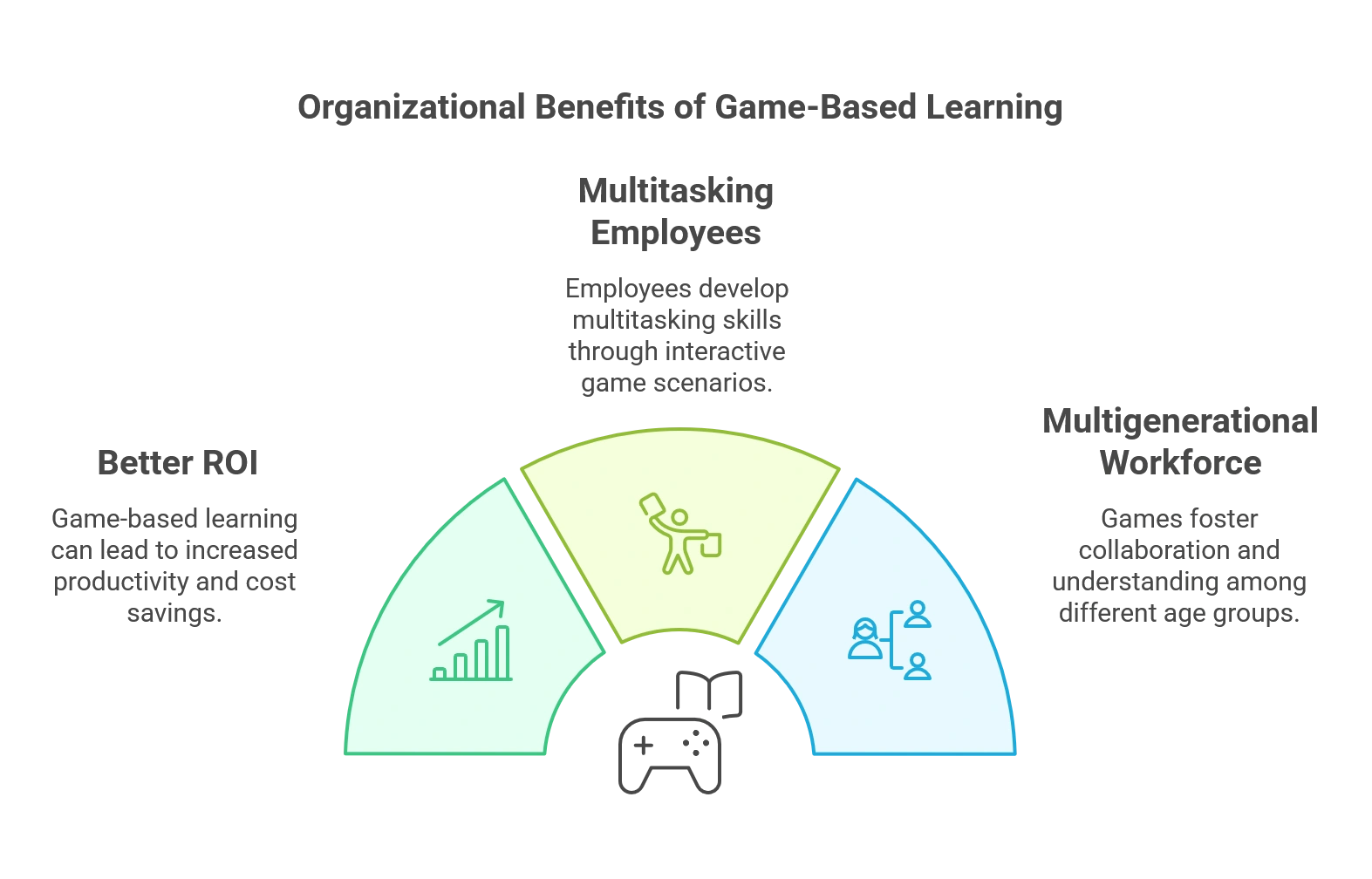
Top 3 Benefits of Game-based Learning Solutions for Organizations
Game learning solutions offer organizations a multitude of benefits. By embracing these innovative approaches, companies can enhance the proficiency of their sales teams, foster collaboration and camaraderie, improve decision-making, and boost overall sales performance.
1. Better ROI
With effective knowledge transfer, the sales reps can remain focused, which is reflected in their performance and productivity. As a result, your business can achieve better ROIs.
2. Multitasking and Highly Skilled Employees
Gamification in sales improves eye-hand coordination skills, problem-solving, social skills, and critical decision-making.
Thus, you can build a team of multitasking employees.
3. Build a Multigenerational Workforce
The love for games is universal. Game learning appeals to sales reps from every age group, from millennials to Gen Z.
This helps you create a strong and skilled multi-generational workforce.
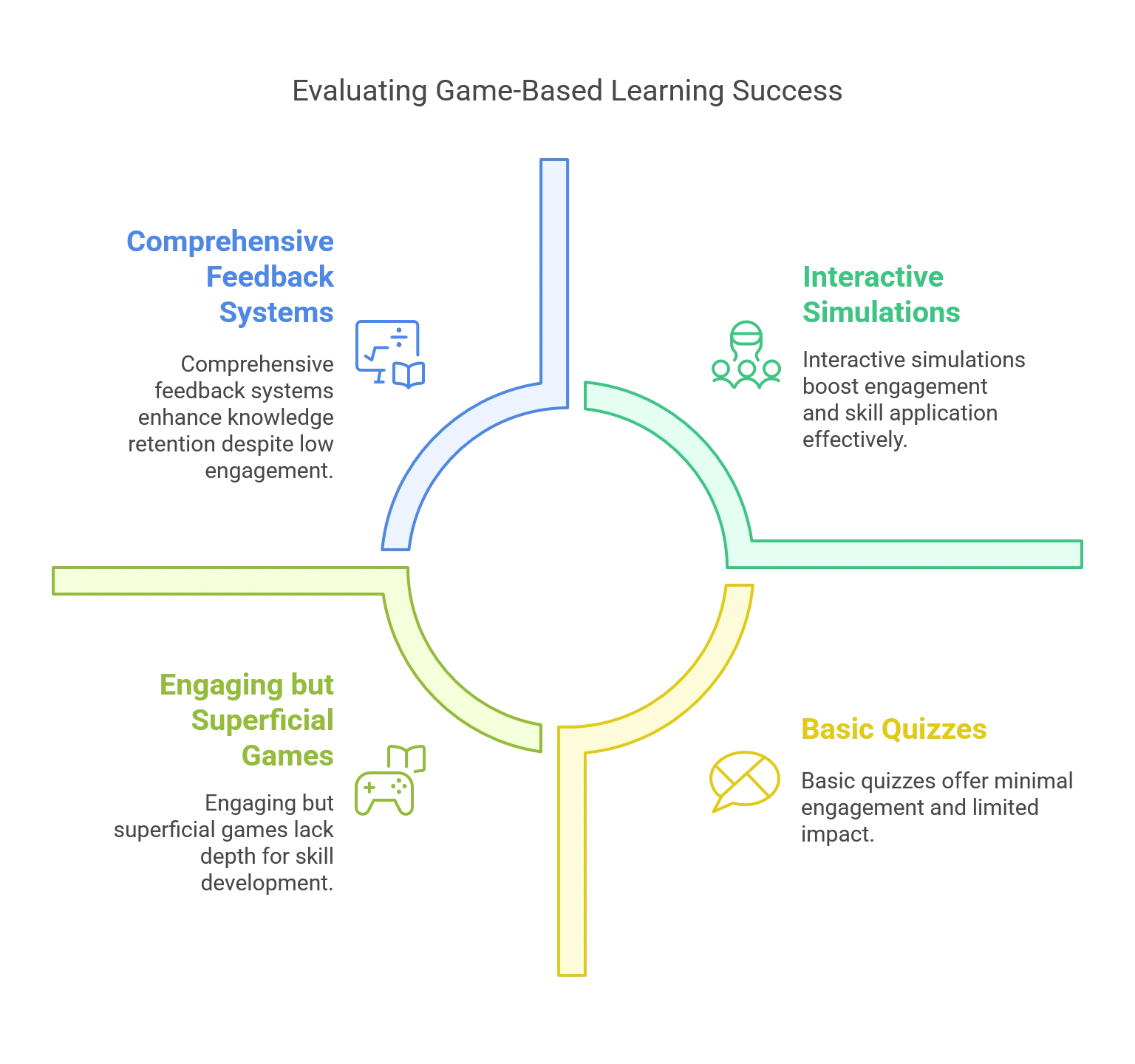
How to Measure the Success of Game-Based Learning for Your Team?
Measuring the success of game-based learning is crucial to ensure that your team benefits from the training. Here are some ways you can measure the success of your game-based learning:
1. Learner Engagement
Engagement is a key indicator of the success of any learning program, and game-based learning is no exception. You can measure engagement by tracking metrics such as the number of times learners log into the game, the amount of time they spend playing, and the number of levels or challenges they complete.
High engagement levels suggest that learners find the game interesting and are motivated to learn. You can also look at learners’ progress in the game, as this can indicate how well they grasp the material.
2. Knowledge Retention
You can conduct assessments or quizzes after the game-based training to measure knowledge retention. These assessments should be designed to test the knowledge and skills the game intended to teach.
If learners perform well on these assessments, it suggests that the game-based learning experience helped them retain the information.
3. Skills Application
Observing if your team applies the skills and knowledge gained from the game in their work is a crucial measure of success. This could be measured through performance reviews or feedback from supervisors.
For example, if the game-based learning program was designed to improve customer service skills, you might look for improvements in customer satisfaction ratings or reductions in customer complaints.
4. Feedback
Gather feedback through surveys, interviews, or informal conversations. Ask learners about their overall experience with the game, what they liked and disliked, and any suggestions they have for improvement.
This feedback can help you understand the learners’ perspective and make necessary adjustments to enhance the learning experience.
How to Implement Gamification in Sales Training?
The whole idea of gamification in sales training is quite appealing. But it can only yield results when it’s implemented properly. Here’s how you do that:
- Set a clear training objective and get customized gamification solutions that perfectly align with your goals.
- Constructive feedback strengthens the learning process, encouraging the trainee salespeople to shift their thought processes and enhance their perspective.
- Resistance to a new approach is quite common. So, adapt your game based learning module to accommodate conflicting ideas.
- Customize the games for remote or hybrid working spaces to get the optimal benefits of the training.
Conclusion
Game learning is a powerful and effective way to enhance the learning outcomes of your learners, as it can motivate, engage, and challenge them and help them retain and apply their learning. To create engaging game learning experiences, you must follow the abovementioned best practices.
Every business wants to capture the attention of potential clients to stay on top of its game. Adopting game-based learning is the key to smart, skilled, and persuasive salespeople who can turn the cold pitch into a business deal.
If you need help creating engaging game-based learning experiences, contact Hurix Digital today. Hurix Digital can help you design and develop custom game learning solutions tailored to your learners’ needs and preferences and can deliver the desired results.
Summarize with:

Senior Vice President – Business Development
at Hurix Digital, with over 25 years of experience in EdTech and workforce learning. He excels in business development, customer relationship management, and scaling digital learning solutions, driving global growth through innovative content, simulations, and AI‑driven training offerings
 Upcoming Masterclass | Build an Army of Brand Evangelists using Training & Development | November 20th, 8:30 AM PDT | 11:30 AM EDT | 10:00 PM IST
Upcoming Masterclass | Build an Army of Brand Evangelists using Training & Development | November 20th, 8:30 AM PDT | 11:30 AM EDT | 10:00 PM IST



